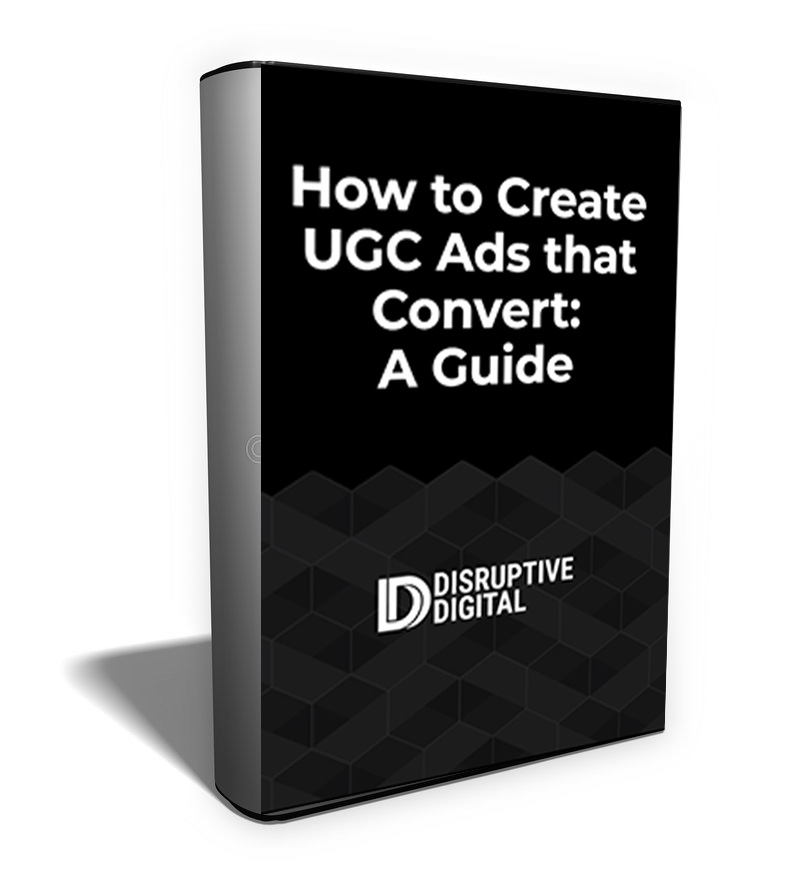Most people think of digital marketing and eCommerce as a young person’s game. For advertisers specifically looking to target older shoppers, that can be immensely frustrating. After all, more than 44% of all online shoppers are above the age of 45, with nearly 30% coming in at 55+.
And yet, nearly all online advertising trend articles and research reports are geared towards younger demographics. It brings up an undeniable conundrum: What do you do when your primary audience isn’t interested in TikTok or Instagram?
Members of Gen X and baby boomers love spending time and shopping online as much as their younger counterparts. They just might require a different strategy to reach, convince, and convert them to become loyal customers. Let’s dig into the eight most prominent digital ad trends for reaching older demographics to boost your online revenue.
1. Older Users Prefer YouTube and Facebook
At this point, saying that older demographics gravitate to Facebook and YouTube above other digital channels is old news. A closer look at the data, though, reveals just how pronounced the advantage of an active presence on these two channels can be.
In Gen X, Facebook has a 76% reach of all internet users, with YouTube coming in second at 70%. Instagram (47% reach) is a distant third, with channels like Pinterest, LinkedIn, and Twitter rounding out the picture.
Among baby boomers, the difference is even more pronounced, with 70% regularly using YouTube and 68% using Facebook. Pinterest (27%0, LinkedIn (24%) and Instagram (23%) are far behind.
From an advertising perspective, that leads to a clear and simple truth: eCommerce merchants with the goal of reaching older demographics have to build an active presence on YouTube and Facebook.
Fortunately, many of the other trends designed in this guide a natural fits for these channels starting with the next one:

2. Video Ads Can Be Immensely Effective
A visual emphasis is important across demographics, but it seems to be especially pronounced among older viewers. Video, especially, has a major place in these users’ daily internet consumption.
Gen X doesn’t just occasionally log into YouTube. According to one recent study, this cohort is responsible for 1.5 billion video views every single day. They tend to watch DIY videos as well as videos that help them stay in the know about the world, making products and brands focusing on these topics an especially relevant fit.
Baby boomers, meanwhile, account for 24% of all YouTube views. And they don’t just look for organic content, either; according to one study, they’re three times more likely to be intrigued by an ad on Google than they would be by a traditional television commercial.
The same video preferences extend to Facebook, as well. In fact, video is the preferred content type for Gen X on Facebook, and the same is true for baby boomers as well. Video ads that can engage older demographics with the types of content they most look forward to can quickly raise awareness and build credibility.
3. In Ad Messaging, Value Matters More than Cost
Older generations naturally tend to have more discretionary income than their younger counterparts. That is especially true for baby boomers, who according to Nielsen hold 70% of the nation’s disposable income. That naturally translates into bigger online purchases, with baby boomers spending more than $203 per transaction – higher than any other generation.
It also means that for older demographics, price-based messaging tends to be less important. Instead, Gen X and baby boomers focus on finding the products that will be most likely to fulfill their value proposition. It’s also why, according to one study, 71% of consumers in this age bracket preferred product descriptions that clearly explained the practical day-to-day benefits of a product.
But of course, older online shoppers don’t just learn about a product’s value proposition from the brand or store from which they’re looking to buy it. In addition, they actively seek out the opinions of others, especially when well-argued, via online reviews and social proof.
In fact, 65% of Gen X online shoppers and 63% of baby boomers become more likely to purchase a product online if enough positive product reviews support the decision. And they’re even more likely to trust expert reviews; as Joe Beier, executive vice president of global market intelligence firm GfK, put it,
“Boomers have much more of an old-school view, ‘Ok, the experts are the ones that know what’s going on. And therefore they’re the ones I’m going to trust and look to help inform my decision.’ … If it’s just more of an anonymous pool of user reviews, there’s a certain skepticism about that”.
4. Baby Boomers Are Driven by Quality of Life Decisions
In messaging to any demographic, of course, the why deserves further investigation. Just what types of pain points can your ads address to make your audience more comfortable with a potential purchase?
Especially when reaching older demographics, it’s not just about value in general. It’s about addressing the same types of issues that drive them to research online in the first place. And, according to numerous studies, those decisions tend to be driven by a desire to maintain and improve their quality of life.
Healthy living, shopping, and travel take center stage. Ads that can drive home the health and quality of life aspect of the products they seek to promote, as a result, can be especially impactful in gaining the attention of baby boomers.
For the slightly younger Gen X, preferences vary slightly – but still move into the same general direction. In fact, the generation with the highest tendency towards brand loyalty places special value on products that can prove they actually improve their day-to-day life. A focus on tangible benefits, specifically as they relate to qualify of life, remains key to messaging success.

5. Almost All Product Research Starts with a Search Engine
A deep understanding of the user journey is a vital part of any successful eCommerce ad campaign. Among older demographics, mapping that user journey is impossible without considering Google – by far the most important research mechanism for Gen X and baby boomers.
Among baby boomers especially, Google is ubiquitous. In fact, 96% of internet users in this cohort use search engines, specifically to learn about brands they’re considering and research potential products they want to buy. The numbers for Gen X are similarly clear, with 4 in 10 users of this cohort using search engines for product research – more than any other digital or non-digital channel.
Seeking to understand the impact of different digital channels, one study examined the actions baby boomers and older demographics tend to take as a result of using a variety of channels. And, once again, search engines significantly outranked social media and even video in a number of important, eCommerce-related categories:
- 77.5% of baby boomers using a search engine followed that up by visiting a company website (compared to 58.3% of social media users and 34% of video viewers).
- 65% of baby boomers using search made an online purchase as a result (compared to 36.6% for social media and 27.9% for video).
- 63.1% of baby boomers using search physically visited a retailer or store as a result (compared to 41.7% for social media and 22.3% for video).
- 58.5% of baby boomers using search felt more comfortable and ready to buy the product they were researching (compared to 29.5% for social media and 24.1% for video).For advertisers, these numbers should have an immense impact.
An active presence on search results, both in terms of organic SEO and paid SEM, can be a major influencing factor for online purchasing decisions.
6. Social Commerce and Influencer Marketing Is Less Prevalent – and Less Trusted
Such a focus on online reviews, combined with this demographics’ prevalence on Facebook, which might be the most built-out eCommerce social media platform to date, might suggest that with this demographic social commerce is on the rise. Instead, the opposite is the case.
In fact, according to one Oracle study, just 8% of baby boomers trust social media ads when looking for recommendations when shopping online. Gen X comes in higher at 23%, but still far behind other generational cohorts like millennials and Gen Z.
One report squarely places the blame for that lack of ad credibility on the prevalence of influencer marketing, which does not hit with older users nearly as much as it does with their younger counterparts. And indeed, the same Oracle study found that 96% of baby boomers actively distrust influencers, which tend to be members of younger generations.
All of that ultimately translates into a demographic that is not particularly interested in social selling. Only 19% of baby boomers have made a purchase on Facebook, far less than other demographic cohorts. The right, expert and value-driven ads may work on a platform like Facebook, but chances are a Facebook store will not be nearly as effective.

7. Older Demographics Split on Desktop and Mobile Device Usage
For years, conventional wisdom for eCommerce merchants concerned with reaching older demographics was to focus on desktop usage above all. But, while desktop remains a preferred choice as users increase in age, mobile-optimized ads are increasingly important to gain their attention and engagement.
While a 2018 study found that only 4% of baby boomers prefer to shop on mobile devices, a 2019 follow-up began to report on changing preferences:
- 46% of online users above age 55 used a mobile retail app to look for more information about a product or service.
- 39% of online users age 55+ used a mobile retail app to buy a product or service.
Since then, the COVID-19 pandemic has accelerated the game. A 2020 study by the National Retail Federation found that 45% of baby boomers have increased their online shopping, with two-thirds of all respondents having tried a buy-online-pick-up-in-store experience using their smartphone or tablet.
And of course, Gen X is already native to mobile shopping, split almost evenly between desktop and mobile eCommerce. Advertisers need to be mindful of these split preferences, building their ads to accommodate both mobile shoppers and desktop shoppers rather than optimizing for one device type over the other.
8. Concerns About Retargeted Ads Increase With Age
Data privacy matters to older generations. In fact, one 2019 study found that concerns about data privacy rise in an almost perfect linear curve by generational cohort, with 63% of Gen X online users and 73% of baby boomers stating that they were either somewhat or very concerned about their private data leaking online or getting into the wrong hands.
As a result, they tend to see retargeted ads specifically tailored to their behavior as intrusive, not beneficial. Unlike younger generations, who actively seek that personalization, baby boomers only expect and desire it once they are an active customer. Seeing personalized product or service ads based only on their browsing data becomes suspicious, not relevant.
That, in turn, presents a conundrum for eCommerce merchants. Especially brands with longer sales cycles due to higher average order values tend to rely strongly on retargeting as part of the larger advertising ecosysetm. Finding a way to leverage retargeting without seeming intrusive or losing audience trust becomes vital.
One option to accomplish that feat is using retargeting in more subtle ways. Instead of showing ads with products your audience may have browsed for, leverage them to reinforce basic value propositions and establish general brand trust and credibility.
Building a Multi-Channel Advertising Strategy Tailored to Older Audiences
Add it all together, and a few key trends begin to emerge. As with other audiences, a multi-channel ad strategy is vital. However, the composition of these channels tends to change. Facebook, YouTube, and Google all play core roles in the larger buyer’s journey for Gen Z and baby boomers who shop online.
Messaging that focuses on value over cost and general quality of life, especially when delivered via video, tends to be successful. Ads need to be optimized for both mobile and desktop devices. And, while retargeting can still play a role in the larger strategy, it should be applied judiciously.
Of course, these trends are still generalized across broader age demographics. Your target audience may still exhibit unique preferences and features that are worth accounting and optimizing for. A close understanding of your core audience is crucial to building a successful ad strategy that ensures long-term, sustainable success.
Need help reaching older demographics to drive sales? Contact us






